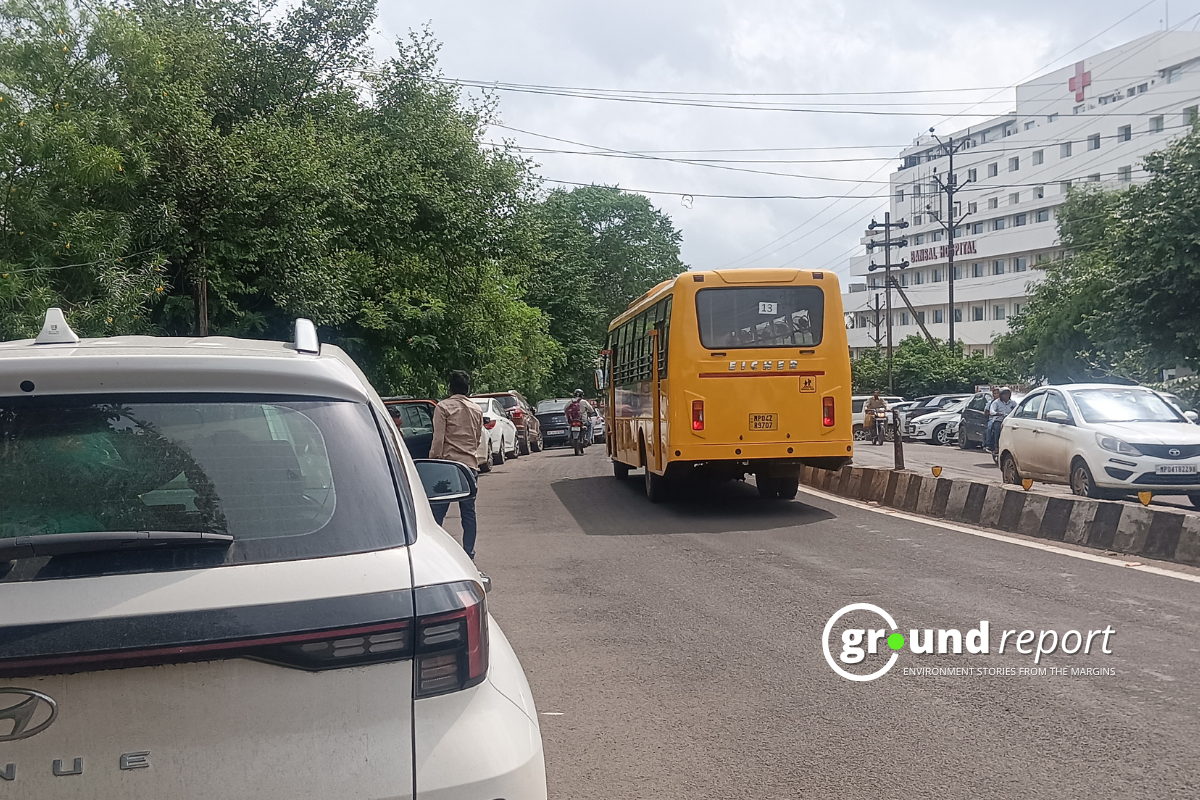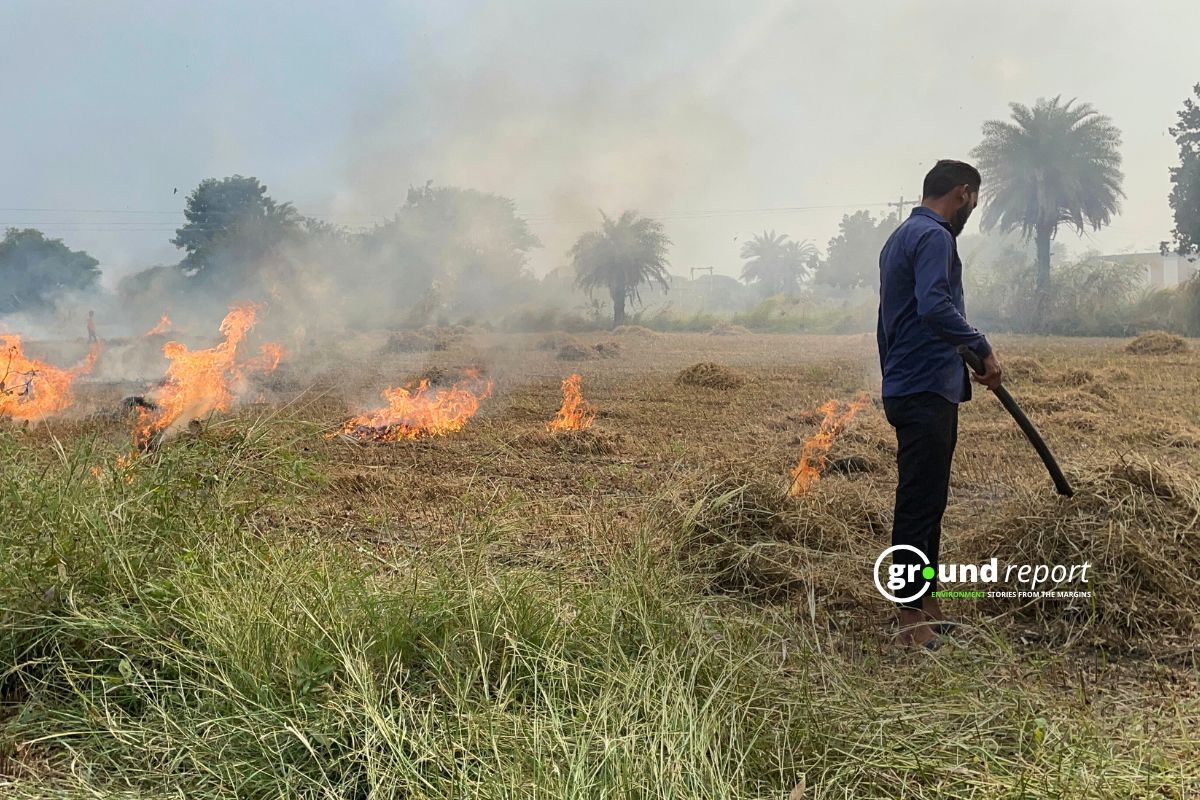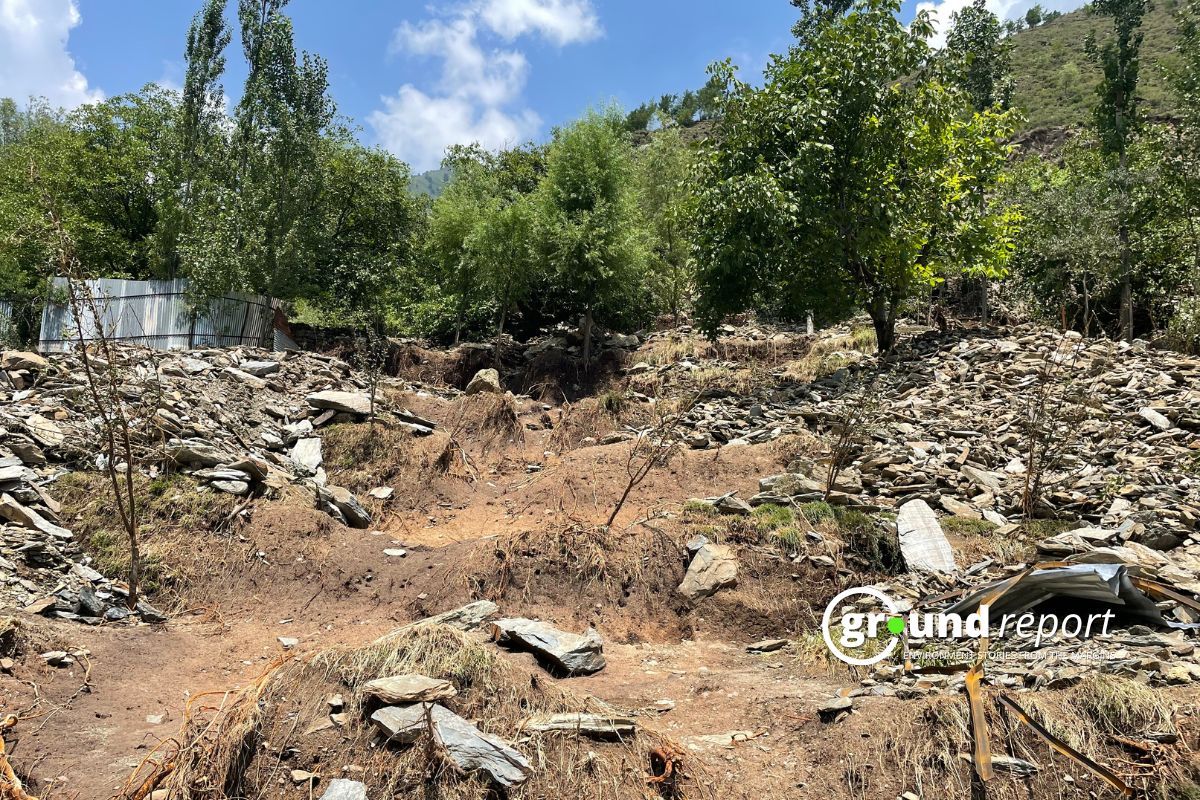This news isn’t new. You’ve likely read about the felling of trees for road construction. Here’s another chapter in that ongoing story.
A road from Ayodhya Nagar, Bhopal, to Ratnagiri is to be widened. And to get the multi-lane highway, 8000 trees are to be chopped. The proposed plan aims to widen this 4-lane road to 10 lanes. The construction work will commence on June 1. It is believed that this road will be ready and starting in the next two years.
However, in response to this issue, people have begun protesting against the cutting of 8,000 trees. A week ago, the residents of Bagh Mughalia Extension Colony protested against it. Now on Sunday, May 4, people protested symbolically by hugging these trees and tying Raksha Sutra. People say that in the name of development, the greenery of Bhopal is continuously decreasing. The decline not only poses a threat to the identity of the city, but it will also become more difficult to live in the city amid rising temperatures.
The ongoing debate over the Ayodhya Bypass project highlights the tension between urban development and environmental conservation. As a generation, can we find a fine balance that can be seamless between nature and infrastructural development?
Bhopal continues to grow; finding a balance that preserves its green spaces while accommodating development remains a critical challenge.

What is the project that sparked controversy?
This project was started about a year ago. In January 2024, Union Road Transport and Highways Minister Nitin Gadkari laid the foundation stone for the 15 National Highway projects in Bhopal. The total cost of these projects is Rs 8,038 crore. The state was to construct 5 highways, each measuring 499 km in length. Minister Gadkari had said,
“The widening of the Ayodhya bypass section will provide relief from traffic jams to passengers travelling from Kanpur to Bhopal.”
The section under discussion spans approximately 16 km. This road currently has 4 lanes. It has to be widened to 10 lanes. With this, the road is to be widened to 43 metres. It will have a 25-meter-wide road lane. Along with this, there will also be two service roads of 7.5 m. Apart from this, there will be two more 1.5-meter stretches.
Speaking of the need for this project, the government is saying that it currently takes 50 minutes to reach the airport from Ratnagiri. After this project, it will take only 25 minutes. The city will spend 836 crore rupees to reduce the car journey. According to a news article in Hindi Daily, the project will be the first road in Bhopal where 2-lane service roads will be built.
If we understand it in simpler language, currently the roads built in villages under the Pradhan Mantri Sadak Yojana are 3.75 m to 5.5 m. This road in Bhopal will have a service lane twice as wide. The bypass will also feature three flyovers.
This road is a part of the Central Government’s Industrial Corridor Project (NICDC). The first line written about this project on the government website is,
“National Industrial Corridor Development Programme is India’s most ambitious infrastructure programme aiming to develop new industrial cities as ‘Smart Cities’ and converging next generation technologies across infrastructure sectors.”
Bhopal is also a smart city only on paper. We have already reported on its current status which you can read here.
To know the total numbers of trees felled for the highways, let us understand the maths. The news confirms that this project requires the cutting of at least 8000 trees. However, this does not include trees with a circumference of less than 30 cm. This is because there is no restriction on cutting trees with a circumference of less than 30 cm. According to an estimate, there are 4,000 trees with a circumference of less than 30 cm. That means a total of more than 12000 trees are to be cut.

What do we gain?
Environmental activist Umashankar Tiwari, who is gathering people in Bhopal on this issue, questions,
“How much have the roads built in Bhopal reduced traffic? Whether it is Kolar Road or the new flyover in front of DB Mall, none of them has solved the traffic problem.”
He says that as soon as the road widens, people illegally occupy its sides. In such a situation, the traffic problem remains the same, but cutting trees definitely causes permanent damage to the city’s environment. He cites an example of the bicycle lane built on the side of the road connecting Bhopal to Hoshangabad that has also been occupied by the dhaba owners for parking.
“When the roads widen here, parking starts happening; the purpose of widening the road is not fulfilled.”
Another environmental activist, Nitin Saxena, says that the green cover in Bhopal has decreased rapidly. Referring to the data of the last 2 years, he says that in just 2 years, more than 5 thousand trees have been cut.
Saxena points out, “4105 trees were cut for the Koler six-lane road, 1377 were cut for the road from 11 Mile to Bangrasia Marg, and 700 trees were cut to convert Neelbad to Barkheda Nathu Marg into a six-lane road.”
He says that the Madhya Pradesh Vrikson Ka Parirakshan (Nagriya Kshetra) Niyam, 2002 were made so that a minimum number of trees are cut in urban areas. If an application for cutting trees came to the Municipal Corporation Commissioner, then after hearing it, it was decided whether the trees were to be cut or pruned. He claims that over the past 10 to 15 years, the government department has discussed tree cutting for development purposes, and the Bhopal Municipal Corporation has granted permission without scrutiny.
He says that these roads are being built for those people who have shops and hotels on the sides of these roads. The general public is not going to get any benefit from this.
Bushra Saba, who is doing PhD at IIT Kharagpur, says in her research paper ‘Green Infrastructure in ecosystem provisions: Macro to Micro’ published in 2023 that the green cover in Bhopal is gradually decreasing. In 1990, this total land was 44.67%, in 2000 it was 34.73%, in 2010 it was 29.51% and in 2021 it decreased to 21.03. They estimate that by 2030 it will decrease to 3.8%.

Environmental activists opposing the cutting of such a large number of trees in Bhopal say that this random cutting of trees is directly affecting their lives.
According to a study on climate action in Bhopal, both real-world data and computer models show a steady increase in average yearly temperatures. If the world continues to release high levels of greenhouse gases (RCP 8.5 scenario), the average temperature in Bhopal could rise by 4.3°C by the end of this century, compared to the average between 1981 and 2010. But if emissions drop quickly (RCP 2.6 scenario), the rise in temperature could be kept to just 1.2°C. This shows how important it is to act now. The more we reduce emissions, the more we can limit the heat.
Environmental activists have announced a protest on May 18, opposing the large-scale tree felling for the Ayodhya Bypass expansion. Activist Nitin Saxena has warned that if the government does not reconsider its decision, he is prepared to move the Supreme Court. In June 2024 also, a decision was taken to cut 29000 trees for the construction of residential structures in Bhopal. But later it had to be withdrawn after local protests.
Support us to keep independent environmental journalism alive in India.
Keep Reading
Short circuits, long suffering: MP’s farm fire tragedies
Sun-kissed farmers: Promises and problems of MP’s solar pumps
How a hydro project in shahabad forest threatens india’s Cheetah Corridor
Scorching Schools: MP’s poor infrastructure puts kids at risk in heatwaves
Follow Ground Report on X, Instagram and Facebook for environmental and underreported stories from the margins. Give us feedback on our email id greport2018@gmail.com.
Don’t forget to Subscribe to our weekly newsletter, Join our community on WhatsApp, and Follow our YouTube Channel for video stories.









